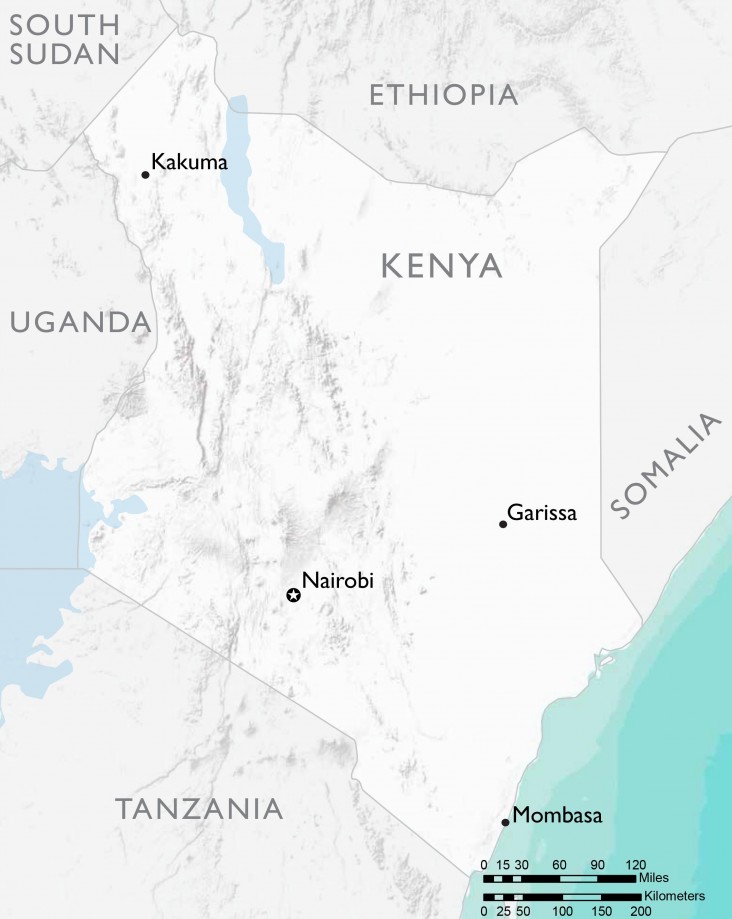- What We Do
- Agriculture and Food Security
- Democracy, Human Rights and Governance
- Economic Growth and Trade
- Education
- Ending Extreme Poverty
- Environment and Global Climate Change
- Gender Equality and Women's Empowerment
- Global Health
- Water and Sanitation
- Working in Crises and Conflict
- U.S. Global Development Lab

September 1, 2017
Food Security Situation
-
The poor performance of the 2016 rainy seasons and the 2017 March-to-May long rains has led to severe drought and deteriorating food security and nutrition conditions in 23 counties in Kenya. The drought-affected population is now expected to be 3.4 million through the end of 2017, according to the recently released Long Rains Assessment (LRA). This is a 31 percent increase from the 2.6 million food-insecure people identified in February 2017.
-
Approximately 420,700 children under five and 39,100 pregnant and lactating women are experiencing acute malnutrition--a slight decreased from the estimated 465,600 people facing acute malnutrition as of March 2017, according to the LRA results. The nutrition situation in parts of Turkana and Marsabit counties is classified as Extremely Critical with global acute malnutrition levels greater than 30 percent.
-
According to the Office of the UN High Commissioner for Refugees (UNHCR), Kenya hosts nearly 500,000 refugees, most of whom are from Somalia. In May 2016, the Government of Kenya (GoK) announced that it would close Dadaab refugee camp complex, housing primarily Somalis, by November 30, 2016. The GoK has since extended the camp’s closure deadline, but the situation continues to present significant challenges. Since December 2014, more than 70,000 Somalis have repatriated from Dadaab, including more than 28,750 returnees in 2017. As of July 2017, Kenya hosted more than 291,900 Somalis, as well as 103,700 South Sudanese fleeing conflict and food insecurity in their own country.
Food Assistance Programs
-
The USAID Office of Food for Peace (FFP) partners with the UN World Food Program (WFP) to provide relief and build resilience among the most vulnerable populations in Kenya, including refugee populations living in camps. In the arid and semi-arid lands (ASALs) counties, FFP supports food-insecure Kenyans by providing cash or food in exchange for work on improving community assets, such as rehabilitating local roads or irrigation systems. FFP is also providing funding and in-kind Ready-to-Use Therapeutic Foods to UN Children's Fund (UNICEF) for the treatment of SAM in the ASALs and among refugee populations in Kenya. In Fiscal Year 2017, FFP is providing support to WFP for contingency planning for possible violence and displacement associated with the Kenyan general elections, as well as supplementary nutritious foods for all children under five, pregnant and lactating women in the counties with the highest levels of acute malnutrition.
-
FFP supports refugees living in the Dadaab and Kakuma camps, and their host communities, through direct food distributions, education on maternal and child health, livelihoods training, and supplementary and therapeutic nutritious foods.
Food for Peace Contributions
Total Contributions:
| U.S. Dollars | Metric Tons | |
|---|---|---|
| Fiscal Year 2017 | $79.3 million | 55,610 MT |
| Fiscal Year 2016 | $63.8 million | 51,150 MT |
| Fiscal Year 2015 | $83.0 million | 74,331 MT |
Related Resources
Horn of Africa Complex Emergency Fact Sheet
Food for Peace Success Story - Kenya's County Governments Take Lead in Food Assistance







Comment
Make a general inquiry or suggest an improvement.